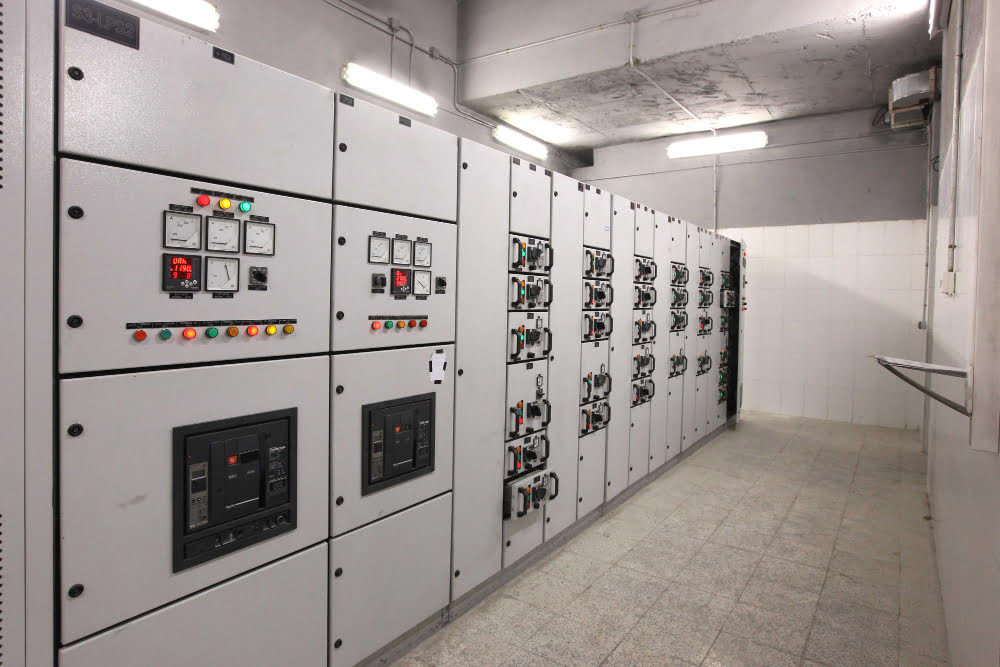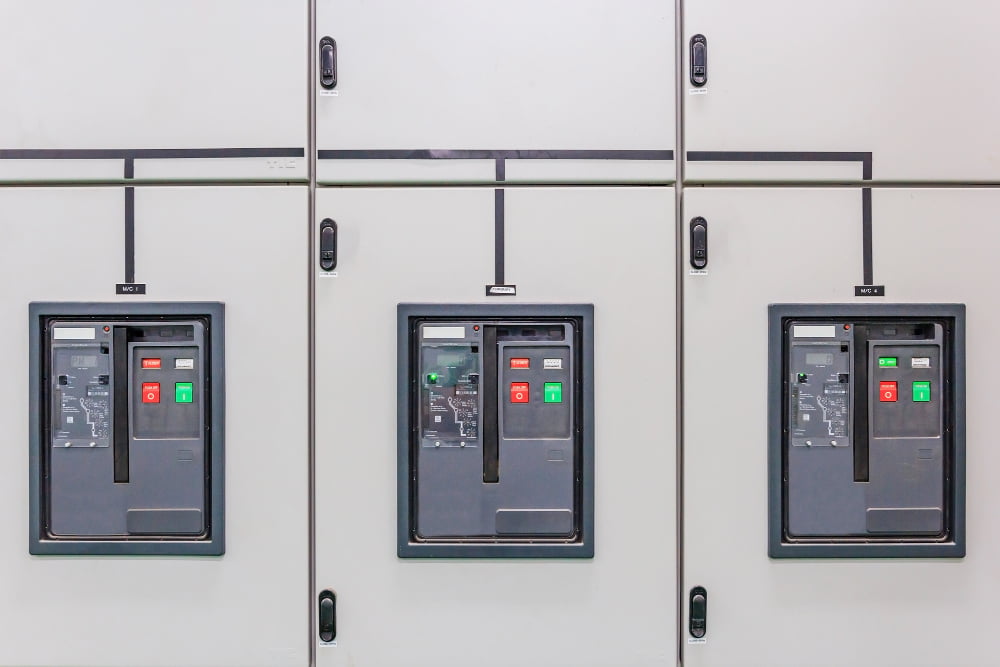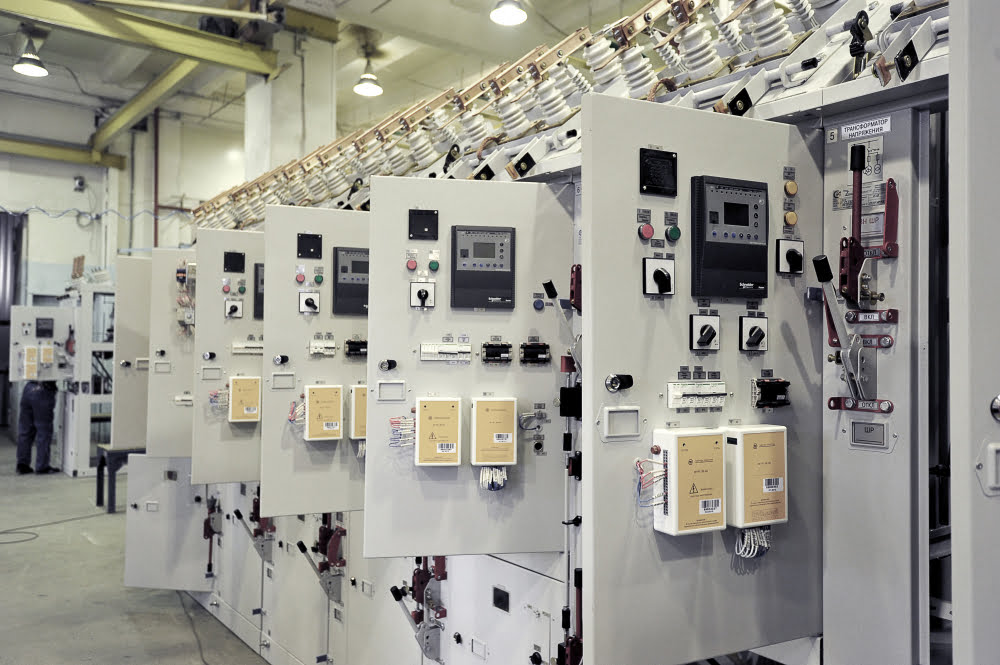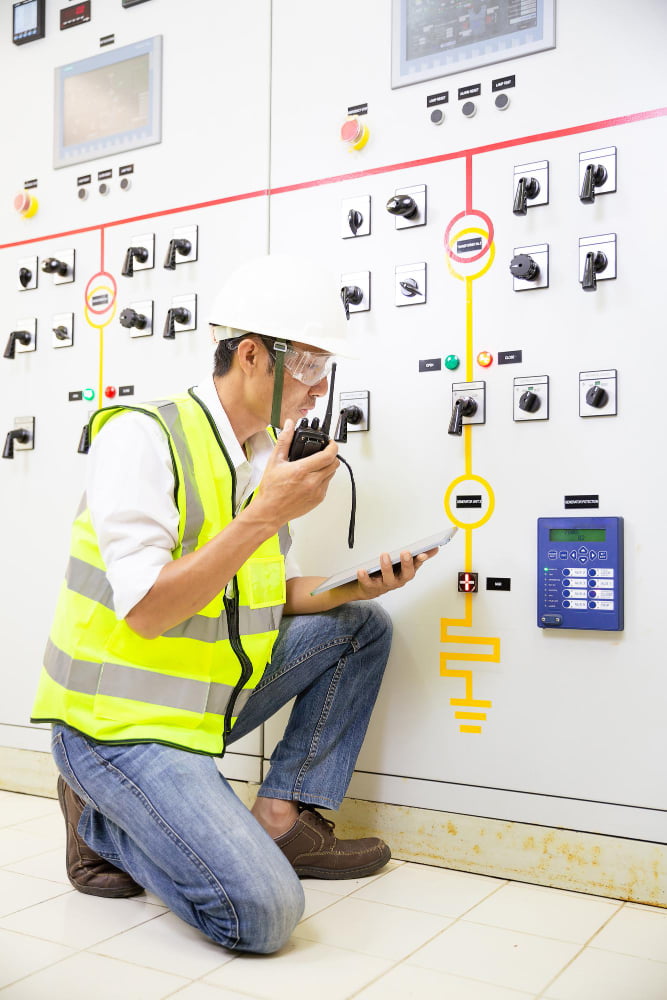Last updated on
Electricity powers the modern world, from homes to hospitals to factories. A complex infrastructure known as the power grid allows generated electricity distributed for various uses. Switchgear plays a crucial role in regulating and protecting electrical equipment within this vast grid. As we rely more on technology and automation, understanding the function of switchgear becomes increasingly important.
The Fundamentals of Switchgear

Switchgear is the combination of electrical switches, fuses, or circuit breakers used to control, protect, and isolate electrical equipment. It acts as a routing system to ensure the smooth distribution of electricity through different parts of the grid while also preventing power surges or overloads.
The primary purpose of switchgear is to de-energize equipment in case of faults and abnormalities. This helps prevent fire hazards, equipment damage, and even loss of human life.
Modern switchgear comes in various forms, such as high, medium, or low voltage types, which are selected based on the application. For instance, a home’s electrical panel contains low-voltage switchgear while a substation transforming high amounts of power will require high-voltage switchgear suited for the purpose.
Proper specification and design of switchgear is important to ensure optimal performance and protection. Factors, like short-circuit ratings, voltage levels, IP ratings, and available fault current levels, must be taken into account.
Types of Switchgear

There are several ways to classify switchgear based on voltage levels, construction type, and interrupting mediums used.
1. Low Voltage Switchgear: Typically operates under 1000V and includes domestic switchboards, distribution boards, and motor control centers. Protects and isolates electric equipment in buildings. Common in residential and commercial settings.
2. Medium Voltage Switchgear: Operates between 1000V to 36,000V levels. Used in industrial environments and utilities. Includes metal-enclosed indoor type and metal-clad outdoor type. Found in manufacturing plants, hospitals, wind farms, etc.
3. High Voltage Switchgear: Operates above 36,000V. Requires more complex safety mechanisms due to high power. It is a key component in transmission substations and hydroelectric dams. Enables distribution of massive amounts of electricity.
In terms of construction, switchgear may be metal-enclosed, metal-clad, open-type, cubicle-type, or draw-out-type. This depends on factors like arc containment, ease of maintenance, environmental exposure, and needed monitoring.
The interrupting medium also varies from oil and air to vacuum and SF6 gas depending on voltage, current, and interrupting rating requirements. SF6 has high dielectric properties, but environmental concerns are driving innovations in SF6-free switchgear.
Switchgear Components and Functionality

While switchgear comes in many shapes and sizes, the following are some of the common components:
Circuit Breakers: Sense abnormal currents and isolate faulty equipment. They are resettable after tripping. Role critical for short circuit protection.
Fuses: One-time protection devices that melt and separate on overcurrents. It needs replacement after blowing—a simple and inexpensive option.
Relays: Sense faults and trigger breakers or alarms. Provide remote control capabilities. Enable automated grid management.
Instrument Transformers: Reduce higher voltages for safe measurement by meters and relays. Include current transformers and potential transformers. Allow condition monitoring.
Bus Bars: Low-impedance interconnectors that distribute power between components. Must be properly sized.
Safety Features: Shutters, interlocks, and insulators prevent human contact with live parts. Critical due to high voltage risks.
Proper coordination between such components is vital for switchgear to work effectively. The system may also include control, monitoring and communication accessories based on connectivity requirements of modern smart grids.
Importance of Switchgear in Electrical Safety

Electricity, while integral to daily function, can be hazardous if uncontrolled. Faults in power equipment can cause catastrophic explosions and fires. This is why proper safeguards like switchgear are indispensable, especially in:
• Transmission Networks: Prevent blackouts due to cascading failures across interlinked systems
• Power Plants: Critical for orderly shutdown during turbine or generator abnormalities
• Manufacturing Facilities: Avoid work disasters and revenue losses from electrical accidents
• Commercial Buildings: People interactions necessitate safety mechanisms against shocks and blazes
• Residential Structures: Mitigate electrical fires, which comprise nearly 25% of house fires annually
• Transportation Infrastructure: Prevent electrocution risks across rail, marine and electric vehicle networks
• Mining Sites: Switchgear monitoring allows identification of sparks before explosions of flammable gases
• Hydroelectric Dams: Control electricity from high-capacity generators to densely populated areas
Thus, switchgear enables the isolation of problematic sections while keeping the remainder of the circuits running. With quick fault detection and system flexibility, switchgear truly empowers the controlled flow of electricity.
Application of Switchgear in Industry
Owing to the safe and reliable distribution it enables, switchgear has become ubiquitous across sectors. Some major applications include:
Power Generation Stations: Essential for connecting generators, transformers, and transmission lines. Enables stability via protection and control. Critical for nuclear stations, thermal, and hydro plants.
Transportation Infrastructure: Railroads, metro stations, and electric vehicles rely on switchgear to power operations and prevent mishaps through control panel integration.
Manufacturing Facilities: Critical for controlling high loads and varying conditions in factories, mills, refineries, and processing units. Important for assembly line continuity.
Commercial Buildings: Maintain the safety of occupants and continue business activities without power disruptions across offices, malls, hospitals etc.
Telecommunication Industry: Support uninterrupted power to servers and systems providing vital connectivity, including telephone networks and internet infrastructure.
Renewable Energy Projects: Facilitate integrating solar and wind power into the electrical grid via distribution panels with built-in control systems.
Mining Sites: Reliable switchgear prevents spark hazards across extraction sites and enables unhindered ore transport.
Thus, switchgear forms the lifeblood of all mission-critical enterprises by facilitating secure power access. Suitable systems and maintenance are vital for this electrical backbone.
The Future of Switchgear Technology
While switchgear has evolved remarkably from early fuses and knife switches, the drive for innovation continues as energy demands multiply exponentially. Some trends shaping the future include:
• Internet of Things Integration: For preventive analytics and predictive maintenance via smart systems with augmented data collection abilities.
• Compact & Eco-Friendly Design: Lower footprint solutions using less hazardous materials aligned with environmental goals.
• Grid Connectivity: Seamlessly embed distribution flexibility for renewable energy support through split-second monitoring.
• Customization: To perfectly match user loads, operating constraints, protection priorities, and control preferences using modular designs.
• Standardization: Unified global standards for universal interoperability and improved safety facilitating cross-continent grids.
• Cybersecurity: As modern switchgear gets increasingly connected, securing systems from cyberattacks will be imperative.
• Alternative Materials Research: Develop newer compact interrupting mediums with lower global warming potential than traditional SF6 and oil options.
Whether enhancing longevity through lifecycle management or enabling interconnected self-healing grids, switchgear will continue to electrify possibilities for a sustainable energy future.
The Takeaway
As electricity forms the foundation for progress today, switchgear is the bedrock strengthening our energy infrastructure for a better tomorrow. From homes to mission-critical industries, safeguarding electrical systems via methodical switching, protection and control helps energize worlds’ dreams.
As grids get smarter and sustainable energy solutions emerge, the importance of adaptive and resilient switchgear grows manifold. Understanding switchgear empowers users to harness its full potential while advancing the prosperity electricity enables. The switchgear of tomorrow promises to be even more trailblazing!
Recap:



